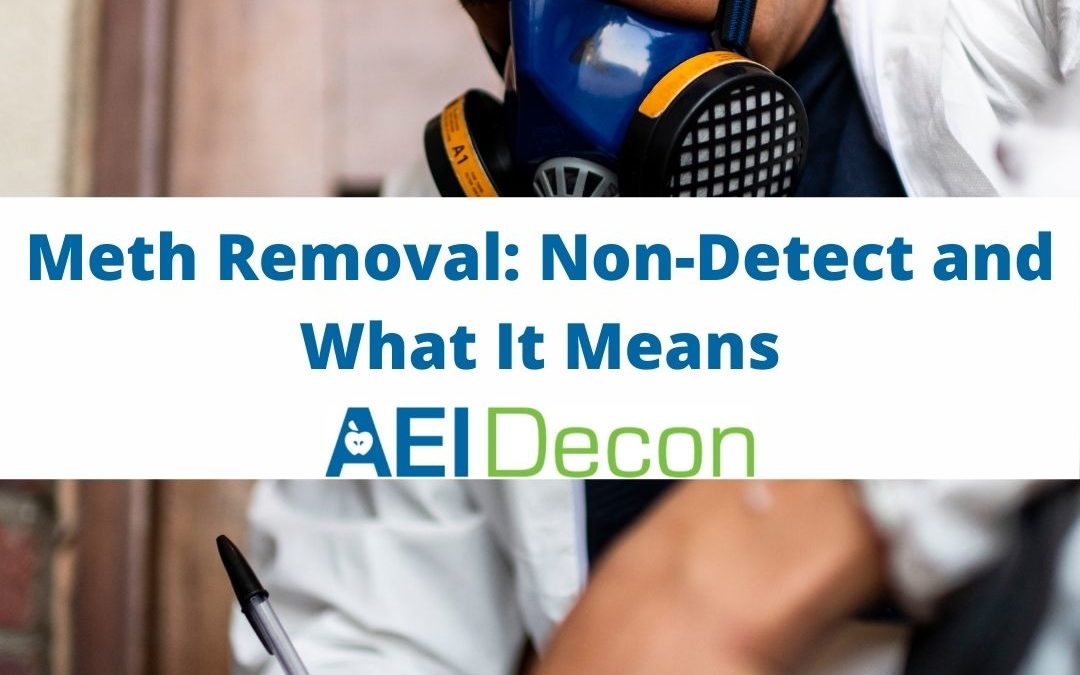There are many misconceptions in the field of meth removal. You may hear that meth permanently destroys property values, can only be removed through demolition, or poses no real threat to an occupant’s health. Of course, all of these claims are false. And, generally speaking, they tend to stem from nothing more than a lack of public knowledge. After all, decontamination is a highly specialized process, and not a common topic at dinner parties.
However, sometimes misinformation originates from professionals as well. And whether this is a result of inexperience or intention, it can absolutely lead to you wasting your time and overspending.
One of the most common, and often costly, misconceptions we hear is that it is impossible to decontaminate a home to non-detectable amounts of meth. This has led to unnecessary challenges with selling certain properties, as well as many homeowners paying for expensive services that simply don’t meet their needs. Luckily, at AEI Decon we can absolutely decontaminate homes to non-detectable levels. In fact, we’re so confident of that fact, we even guarantee our work.
Non-Detectable and What It Means
When our Certified Decontamination Specialists test a home for meth, we follow definitive procedures. Part of this process is to send your home’s sample to a specialized laboratory, such as ALS Global. Non-detectable, then, is one of the quantities you may see on such a lab report. It indicates that if any meth is present in our sample, it is so negligible that the lab’s sensitive instruments can’t find it. We like this reading since it’s as close as you can get to ‘zero meth.’
Now, we say ‘as close as you can get,’ because no test will include every single surface in your home. That would be beyond expensive and unnecessary. What we’re really looking for, then, is enough meth to be of concern.
But, how can we have confidence in non-detectable results without testing every square inch? Well, the answer lies in the molecule of meth itself. You see, meth changes state easily. It exists as a solid, a vapor, and a residue. When burned, it dispurses and coats many surfaces, requiring specific methods to remove. And meth doesn’t stop there, either. Heat, the passing of time, and other environmental forces can easily re-vaporize this substance. Eventually, these state changes will allow meth to spread throughout your home, working its way into the ventilation system, and beyond.
So, all of this means that if your home contains high levels of meth, proper sampling will almost certainly find it. Again, no test can assure you that there’s not a single molecule present. But, as long as proper sampling took place, and we don’t have any other reason to suspect an error in the test—non-detect truly is the ideal reading.
Decontaminating to a Non-Detectable Level
So, now that we’ve covered the terminology, we know what you’re wondering. Once there is meth in a home, is it possible to return it to non-detectable standards? The answer is yes—if you have the right expertise and follow the right procedures. Though, that can require more intensive labor and superior meth-removal formulas, which can add some expenses. Of course, we’re always available to help you determine whether your situation justifies such an approach, or if decontaminating to state requirements is a better route for you.
However, be aware that there are some professionals that choose to offer limited services. They assure their customers that their homes require costly demolition or that there is simply no way to produce non-detectable results.
If you’ve received similar information, we strongly urge you to seek a second opinion. Check with another Certified Decontamination Specialist in your area, or feel free to call us. We’re happy to discuss our services and provide a free consultation. (801) 888-6698.

